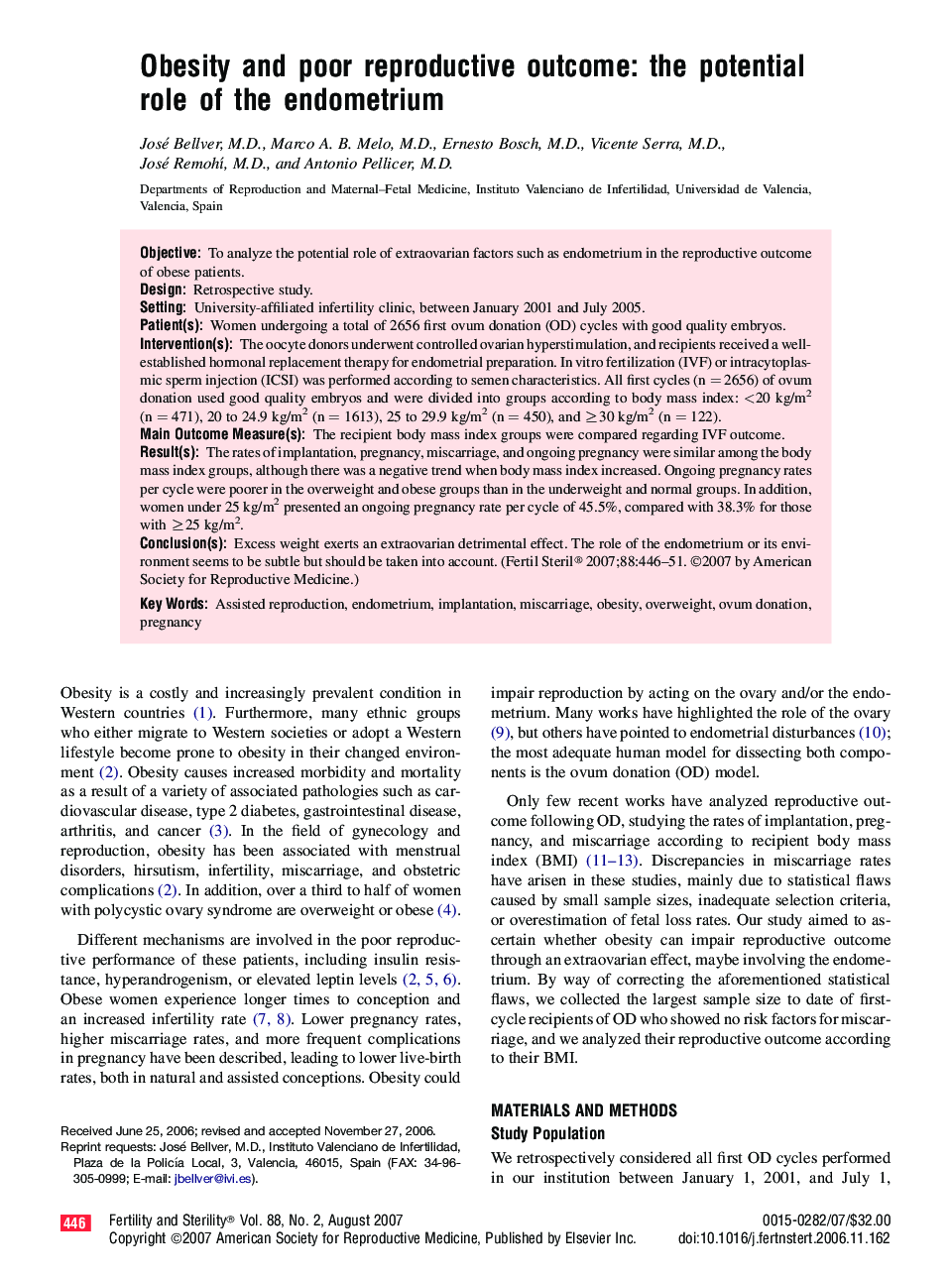| Article ID | Journal | Published Year | Pages | File Type |
|---|---|---|---|---|
| 3935513 | Fertility and Sterility | 2007 | 6 Pages |
ObjectiveTo analyze the potential role of extraovarian factors such as endometrium in the reproductive outcome of obese patients.DesignRetrospective study.SettingUniversity-affiliated infertility clinic, between January 2001 and July 2005.Patient(s)Women undergoing a total of 2656 first ovum donation (OD) cycles with good quality embryos.Intervention(s)The oocyte donors underwent controlled ovarian hyperstimulation, and recipients received a well-established hormonal replacement therapy for endometrial preparation. In vitro fertilization (IVF) or intracytoplasmic sperm injection (ICSI) was performed according to semen characteristics. All first cycles (n = 2656) of ovum donation used good quality embryos and were divided into groups according to body mass index: <20 kg/m2 (n = 471), 20 to 24.9 kg/m2 (n = 1613), 25 to 29.9 kg/m2 (n = 450), and ≥30 kg/m2 (n = 122).Main Outcome Measure(s)The recipient body mass index groups were compared regarding IVF outcome.Result(s)The rates of implantation, pregnancy, miscarriage, and ongoing pregnancy were similar among the body mass index groups, although there was a negative trend when body mass index increased. Ongoing pregnancy rates per cycle were poorer in the overweight and obese groups than in the underweight and normal groups. In addition, women under 25 kg/m2 presented an ongoing pregnancy rate per cycle of 45.5%, compared with 38.3% for those with ≥25 kg/m2.Conclusion(s)Excess weight exerts an extraovarian detrimental effect. The role of the endometrium or its environment seems to be subtle but should be taken into account.
